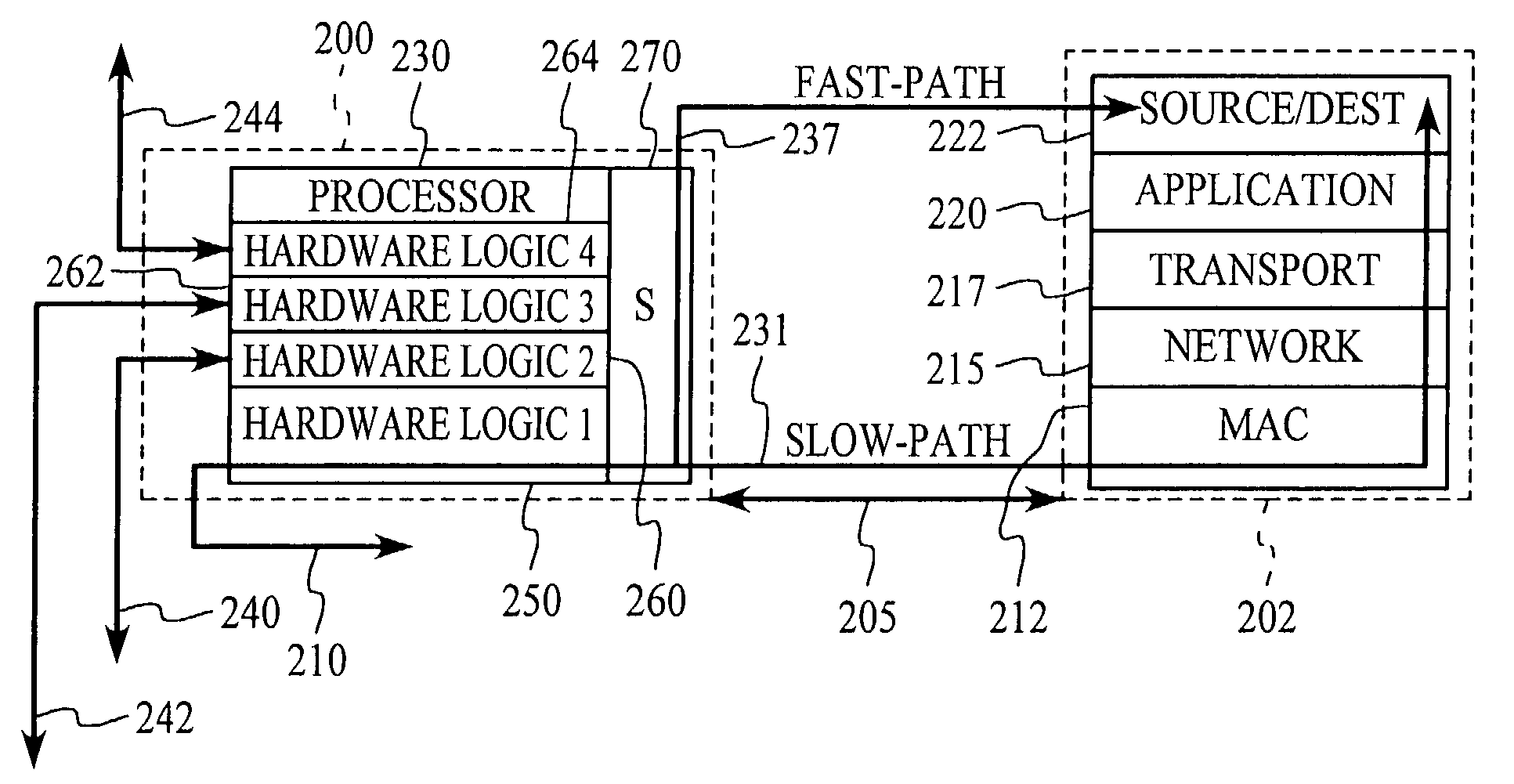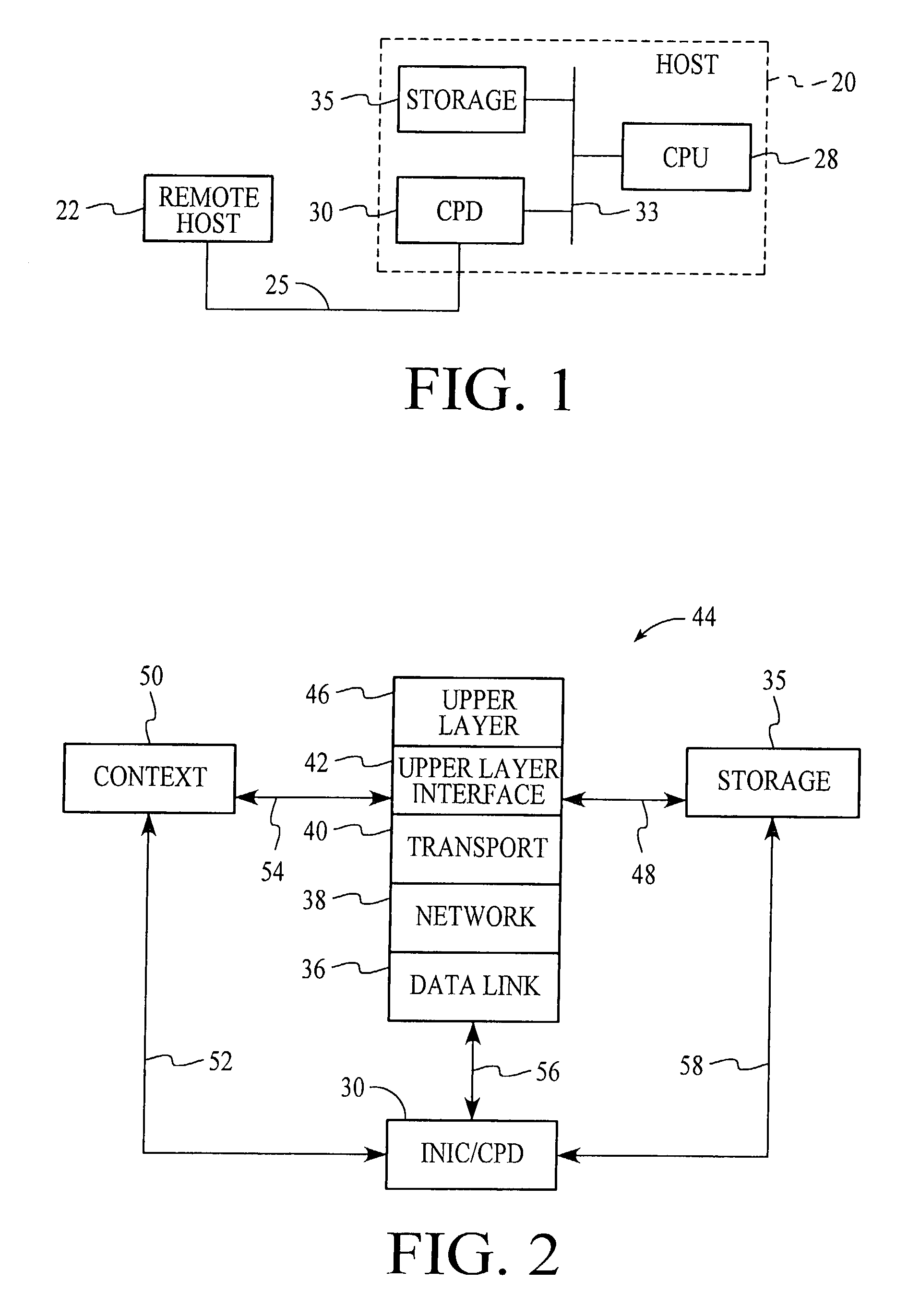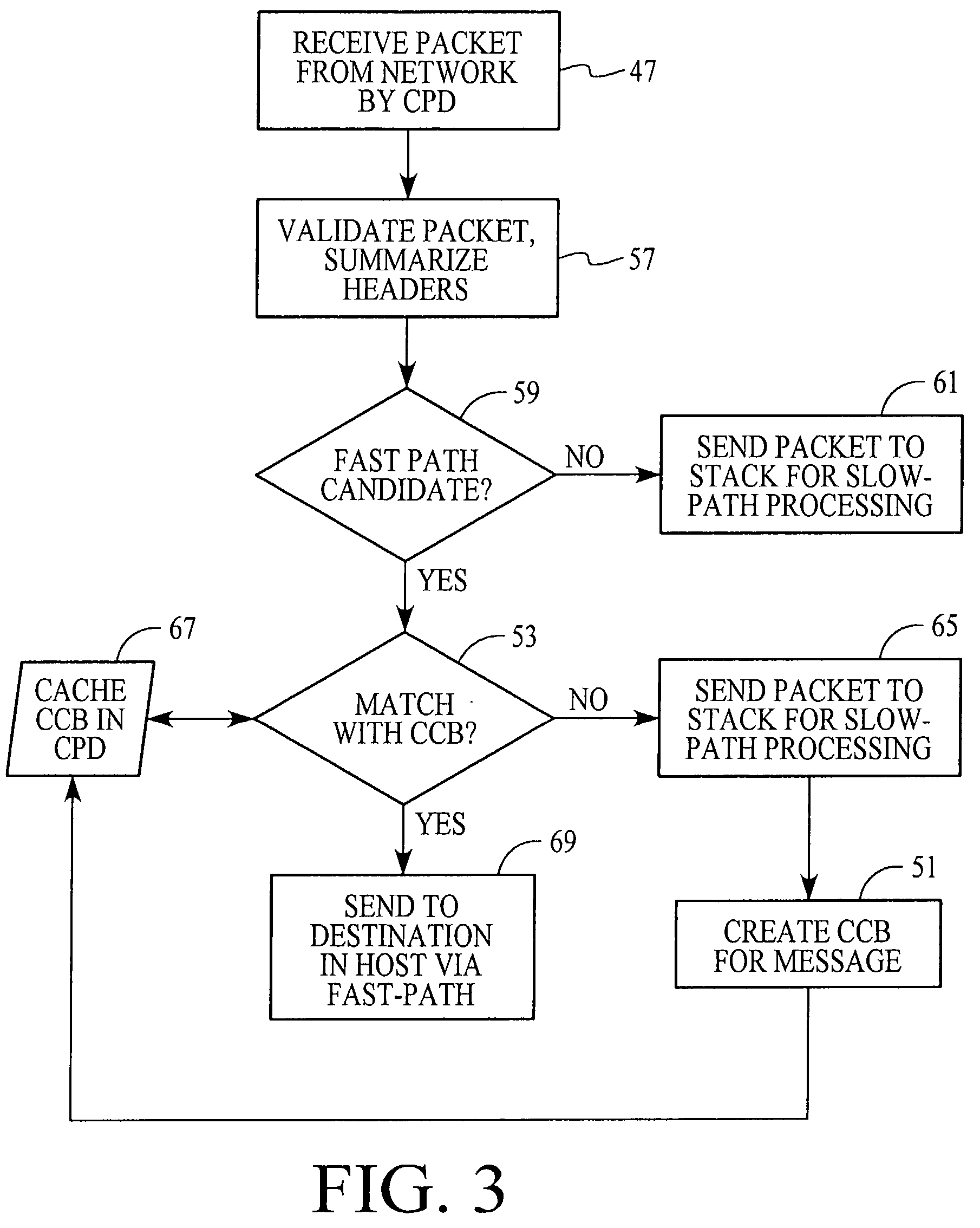TCP/IP offload network interface device
a network interface and network interface technology, applied in the computer or other network field, can solve the problems of complex tcp/ip protocol stack and consume a 200 mhz pentium-pro, and achieve the effect of avoiding unnecessary load on the pci bus, and reducing the complexity of the tcp/ip protocol stack
- Summary
- Abstract
- Description
- Claims
- Application Information
AI Technical Summary
Benefits of technology
Problems solved by technology
Method used
Image
Examples
Embodiment Construction
[0124]FIG. 1 shows a host 20 of the present invention connected by a network 25 to a remote host 22. The increase in processing speed achieved by the present invention can be provided with an intelligent network interface card (INIC) that is easily and affordably added to an existing host, or with a communication processing device (CPD) that is integrated into a host, in either case freeing the host CPU from most protocol processing and allowing improvements in other tasks performed by that CPU. The host 20 in a first embodiment contains a CPU 28 and a CPD 30 connected by a PCI bus 33. The CPD 30 includes a microprocessor designed for processing communication data and memory buffers controlled by a direct memory access (DMA) unit. Also connected to the PCI bus 33 is a storage device 35, such as a semiconductor memory or disk drive, along with any related controls.
[0125]Referring additionally to FIG. 2, the host CPU 28 controls a protocol processing stack 44 housed in storage 35, the...
PUM
 Login to View More
Login to View More Abstract
Description
Claims
Application Information
 Login to View More
Login to View More - R&D
- Intellectual Property
- Life Sciences
- Materials
- Tech Scout
- Unparalleled Data Quality
- Higher Quality Content
- 60% Fewer Hallucinations
Browse by: Latest US Patents, China's latest patents, Technical Efficacy Thesaurus, Application Domain, Technology Topic, Popular Technical Reports.
© 2025 PatSnap. All rights reserved.Legal|Privacy policy|Modern Slavery Act Transparency Statement|Sitemap|About US| Contact US: help@patsnap.com



